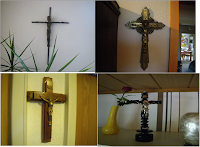Monday 17 October 2011
hungry hill
Saturday 15 October 2011
mnemotechny or counting sheep
Revisiting those riveting techniques and then recalling passages from Plato about the hazards of the written (uncommitted) word, printed on a page but not imprinted elsewhere and making memory something external was a little bit revolutionary for me, in the retelling. The author’s coverage of participatory journalism that made him the architect and landlord of many memory palaces really highlighted the extent to which we have made our memories something outside of us, relying on the internet, digital photographs, and even surrendered to GPS when one of the things that humans are innately good at is navigation and spatial awareness, and thus in a time where memorization is frowned upon and seen as demeaning, punishment, how much practice really can perfect and lead to expertise. Our minds are really capable of incredible things and we may be too quick to fault them or resort to the latest crutch. After all, what innovation comes without a jolt and a hook from what came before. I fully intend to investigate this, but don't take my word for it... Speaking of the memorable and what creatures might people your own memory palaces, last time we were in Ireland, we noticed that neighbouring sheepfolds had begun tagging their flock with spray paint, usually a green, red or blue dot. This time, however, there was a splendid group that appeared nearly tie-dyed.
Friday 7 October 2011
korkenzieher or exonymy
I remember when I was little, I had a light and fluffy block of cork wood that I thought was a very rare and exotic thing as part of a larger collection of stones, fossils and pieces of petrified wood. It was eaten with wormholes, and I think I only tried once floating it in the bathtub. Such an unusual grove must have its origins with the Irish second-city of the same name, I was convinced.
flory and fitchy or cross moline
The adult daughter of our neighbor has recently returned home to care for her mother and seeing to the considerable undertaking of getting her mother's household in order. The upper suite of rooms are beginning to look more livable and lived-in, and one afternoon, what I first thought was a Saint Stephan's or Patriarchal Cross, appeared in the window--almost like it was taped on. Another neighbour though it was the same thing, although he said it looked like a Saint Andrew's--which actually is the x-shaped one. Later, I was assured it was a bathroom shelf--but I wondered if it might be a sort of scarecrow--something to ward off the heathens whose terrace is just off their house.
 I thought the daughter certainly did not want to get in a Cross Battle royale with us. I knew of the variations on cruciform symbols and a little bit about their associated lore and meaning, but I always thought that that the holy magazine was more like an armoury, gruesome and violent, like a museum of archery or spears, and ultimately telling of how saints were posed when martyred. I had not beforehand really associated the different symbols with the language of heraldry, like floried and fitched, reduced to ornaments but originally describing a cross with staves and stakes that could be fixed in the ground. The colourful and exacting terminology of charges, seals and coats-of-arms (Wappen) is a constant and unchanging thing, because there was no means to visually communicate the right tinctures and proportions of how a symbol should look without faithfully reproducing it in the first place. It's funny how a casual and accidental arranging can impart the same sort of associations.
I thought the daughter certainly did not want to get in a Cross Battle royale with us. I knew of the variations on cruciform symbols and a little bit about their associated lore and meaning, but I always thought that that the holy magazine was more like an armoury, gruesome and violent, like a museum of archery or spears, and ultimately telling of how saints were posed when martyred. I had not beforehand really associated the different symbols with the language of heraldry, like floried and fitched, reduced to ornaments but originally describing a cross with staves and stakes that could be fixed in the ground. The colourful and exacting terminology of charges, seals and coats-of-arms (Wappen) is a constant and unchanging thing, because there was no means to visually communicate the right tinctures and proportions of how a symbol should look without faithfully reproducing it in the first place. It's funny how a casual and accidental arranging can impart the same sort of associations. Thursday 6 October 2011
ghost run
mainframe
catagories: lifestyle, technology and innovation
Wednesday 5 October 2011
whack fol de turalura ladie, whack fol de turalureley
You can see Dublin City and the fine groves of Blarney,











